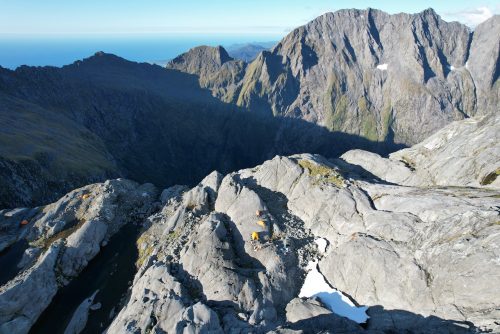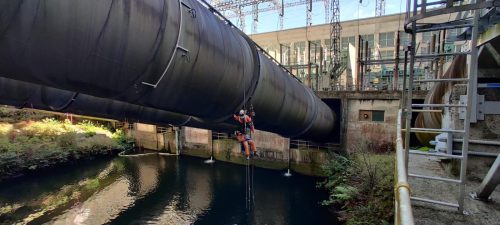In 2012, the sheer 350-meter high rock wall at the head of Sinbad Valley, located in the pristine wilderness of New Zealand’s Fiordland, became the focus of an exceptional conservation effort. Martin Wilson, the managing director of Abseil Access, was contracted to embark on a remarkable mission. The objective was to investigate the remote terrain for signs of the elusive Sinbad Skink, a lizard species classified as critically endangered.
During this expedition, Wilson spotted a solitary Sinbad Skink, confirming to the Department of Conservation that a viable population of this threatened species had found a safe refuge from predators on this colossal vertical wall. The discovery was a significant stride in protecting and preserving the Sinbad Skink, an animal of significant ecological value and a distinct emblem of New Zealand’s biodiversity.
Fast forward 11 years to January 2023, Wilson, now a seasoned veteran in challenging search missions and three other highly skilled rope access workers, once again ventured back to the towering rock wall. The goal was not just to extend the search but, with increased ambition, to capture enough Sinbad Skinks to carry out a translocation to a predator-free island.
In this mission, the team was bolstered by the expertise of three renowned herpetologists, who contributed their knowledge of reptile and amphibian behaviour and ecology. Establishing their base camp at an altitude of 1600 meters atop the wall, they braved the challenging conditions to conduct a five-day search and trapping operation. In these five days, the team undertook gruelling abseils, some up to 180 meters long, meticulously laying approximately 50 traps across the rock face. Their commitment to the cause bore fruit, yielding a remarkable capture of 11 Sinbad Skinks, an invaluable contribution to securing this species’ survival.
In addition to the Sinbad Skinks, the team also documented the presence of 2 Cascade Geckos and 25 Mahogany Skinks, further illustrating the richness of biodiversity in this unique vertical ecosystem. The outcome of this daring mission reaffirms the value of multidisciplinary collaboration in conservation and sheds light on the hidden biodiversity of New Zealand’s Fiordland. As we celebrate the triumphs of these expeditions, we are reminded of the intricate balance that nature maintains and our responsibility to ensure its continued existence. We are proud to have played a part in these endeavours and look forward to supporting more such conservation initiatives.




